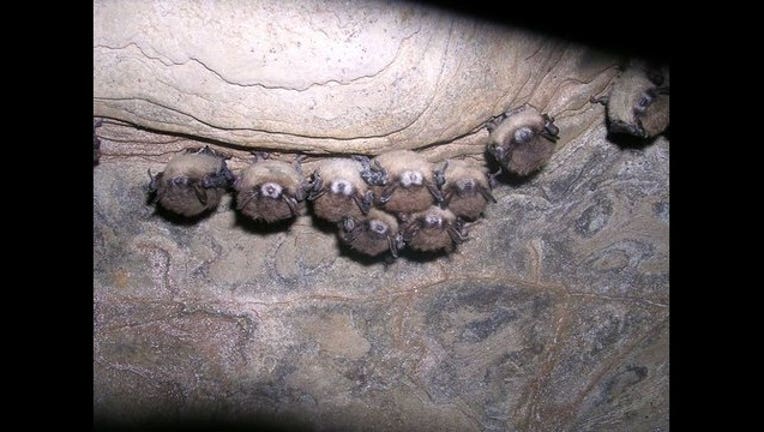White-nose syndrome confirmed in Minnesota bats

Photo courtesy of the New York Department of Environmental Conservation.
ST. PAUL, Minn. (KMSP) - White-nose syndrome, a disease that is usually fatal to bats, has been confirmed at Lake Vermilion-Soudan Underground Mine State Park in northeastern Minnesota. According to the Minnesota Department of Natural Resources, several hundred dead bats were found near the main entrance to the mine in January. Bats that were sent to the National Wildlife Health Center in February confirmed the infection of white-nose syndrome.
White-nose syndrome was first discovered in North America in 2007 in eastern New York. The disease has since spread to 27 states and 5 Canadian provinces, killing more than 5.7 million bats.
White-nose syndrome gets its name from the fuzzy white fungus found on infected bats. The fungus is not known to pose a threat to humans, pets, livestock or other wildlife.
The fungus that causes the white-nose syndrome was discovered at Soudan Underground Mine and at Mystery Cave State Park in southeastern Minnesota in 2013.
“We’ve been following the recommended procedures to try to protect the bats from white-nose syndrome,” said Jim Essig, park manager at Soudan Mine. “Now that it’s here, we will continue to do everything we can at our parks to prevent human transport of fungal spores to other sites.”
For several years, public tours of Soudan Mine and Mystery Cave have begun with a brief lesson on how to prevent the spread of white-nose syndrome. Visitors are also required to walk across special mats designed to remove spores from their shoes.
To learn more about white-nose syndrome and Minnesota’s bat population, visit www.mndnr.gov/wns.

